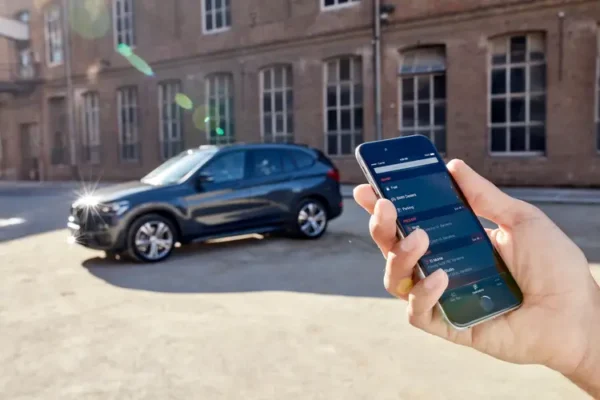
Enhancing Fleet Safety: The Latest in Business Vehicle Technology for SMEs

As business efficiency becomes more and more intertwined with advanced technology, small and medium-sized enterprises (SMEs) leveraging vehicle fleets find it essential to prioritise safety and optimisation. The right technological tools not only safeguard drivers but also contribute to substantial operational efficiencies.
Telematics Systems
Telematics has revolutionised the way fleets are managed by providing dynamic access to vehicular data. These systems facilitate real-time tracking of vehicles, encompassing details like speed, location, and mechanical health. The immediate benefit is the optimisation of routes which helps in reducing fuel costs and improving delivery times. As a direct consequence, fleet managers gain unparalleled visibility into vehicle operations, empowering them to make decisions that bolster efficiency and safety.
Telematics supports proactive maintenance schedules and can alert managers to irregularities in driving behaviour, such as excessive speeding or harsh braking. By addressing these issues promptly, businesses can significantly reduce the risk of accidents and extend the operational lifespan of their vehicles. The deployment of such technology not only enhances fleet management but also plays a crucial role in sustaining a culture of safety and responsibility within the company.
Advanced Driver Assistance Systems (ADAS)
ADAS represents a significant stride towards integrating automation within fleet operations, focusing on safety enhancements. Technologies such as adaptive cruise control, emergency braking, and lane-keeping assist help in mitigating the risks associated with human error. These systems provide real-time assistance and alerts to drivers, facilitating immediate corrective actions that can prevent potential accidents.
The introduction of such systems has seen a noticeable reduction in collision rates and has been instrumental in protecting assets and human lives alike. For SMEs, the investment in ADAS is justified through reduced insurance premiums and lower accident-related costs, proving that safety technology is an invaluable facet of modern fleet management.

GPS Tracking
GPS technology is instrumental in the precise monitoring and coordination of fleet vehicles. It enables companies to track their assets accurately, ensuring security and efficiency. Real-time location data allows managers to make informed decisions regarding route adjustments and dispatching, which can lead to improved customer service and reduced operational costs.
The strategic application of GPS tracking extends beyond mere location pinpointing. It enhances driver accountability, optimises asset utilisation, and plays a vital role in emergency response situations. Whether dealing with theft recovery or critical service deliveries, GPS technology provides the necessary tools to maintain control over fleet operations.
Driver Monitoring Systems
Driver Monitoring Systems enhance fleet safety by continuously assessing driver behaviours and providing feedback. These systems scrutinise driving patterns, helping to identify risky behaviours that could lead to accidents or infractions. The data collected is invaluable for conducting targeted training sessions aimed at improving driver safety practices.
Additionally, these systems support regulatory compliance by ensuring drivers adhere to stipulated driving hours and rest periods. The information helps to prevent driver fatigue—a common cause of accidents—thus maintaining high safety standards and protecting companies from potential legal consequences.
High Quality Dashcams
The adoption of a connected 4G dashcam can serve as a critical step in modernising fleet safety measures. These devices offer live streaming and recording capabilities, providing clear visual evidence in the event of an incident. This can be crucial for resolving disputes, assessing driver performance, and modifying training programmes accordingly.
This technology not only aids in immediate response and decision-making but also supports long-term data collection and analysis. Insights gained from this data help refine operational strategies, making them more aligned with safety protocols and business objectives.
Fuel Management Technology
Effective fuel management is essential for maintaining cost efficiency within fleet operations. Modern technology provides tools for monitoring fuel consumption, detecting inefficiencies, and preventing fraud. These systems are vital for SMEs looking to optimise operational costs and ensure environmental compliance.
Fuel management technology also contributes to sustainability by encouraging eco-friendly driving practices. Through detailed analytics, businesses can identify opportunities to reduce emissions, aligning operational practices with increasingly stringent environmental regulations.
Electronic Logging Devices (ELD)
ELDs are critical for ensuring compliance with hours-of-service regulations, aimed at preventing driver fatigue. These devices automatically record driving time, providing an impartial and accurate measure that helps companies adhere to legal standards. The adoption of ELD technology reduces the risk of non-compliance penalties and enhances road safety by enforcing rest breaks for drivers.
ELDs offer an array of operational benefits, such as streamlining administrative processes and improving the accuracy of billing and payroll. They provide a digital footprint that can be analysed to further optimise fleet operations and safety strategies.
Vehicle-to-Everything (V2X) Communication
V2X technology marks a groundbreaking shift in how vehicles interact with their environment. This technology facilitates communication between a vehicle and any entity that may affect, or may be affected by, the vehicle. This includes other vehicles, pedestrian traffic, and infrastructures like traffic signals and road signs.
The deployment of V2X technology can significantly enhance situational awareness for drivers, reducing accidents and improving traffic flow. As this technology evolves, it promises to play a pivotal role in the development of autonomous vehicles, further enhancing safety and efficiency in fleet management.
Predictive Maintenance
Predictive maintenance utilises advanced analytics to forecast vehicle maintenance needs before they develop into serious problems. This approach helps in scheduling services during optimal times, reducing vehicle downtime and extending the lifespan of fleet assets. By anticipating maintenance needs, companies can avoid the higher costs associated with emergency repairs and breakdowns.
This proactive maintenance strategy is supported by data collected from various vehicle sensors, which monitor conditions in real time. The insights derived from this data not only prevent mechanical failures but also contribute to smoother fleet operations and enhanced safety.
Mobile Applications for Fleet Management
Mobile applications represent a versatile tool in fleet management, offering a range of functionalities accessible from anywhere at any time. These apps enable managers and drivers to access critical information, perform tasks, and communicate seamlessly, enhancing the overall management process. The convenience and efficiency brought by mobile technology allow for better time management and decision-making in fleet operations.
These applications also facilitate greater collaboration between team members, which is essential for maintaining operational continuity and safety. With features such as instant messaging, task reminders, and live updates, mobile apps are indispensable in the modern fleet management toolkit.
Integrated Fleet Management Platforms
The advent of integrated fleet management platforms has significantly simplified the coordination and management of fleet operations. These platforms consolidate data from various technologies such as GPS tracking, fuel management, and driver monitoring systems into a unified interface. This centralisation enhances the ability to make informed decisions quickly, improving response times to any operational challenges that may arise.
These platforms also facilitate enhanced communication within the fleet, fostering a connected and informed workforce. Alerts and updates can be disseminated instantly, ensuring that all team members are aware of any changes or requirements. The ability to integrate with other business systems, such as HR and finance, streamlines workflows and reduces administrative burdens.

Autonomous Vehicle Integration
As technology advances, the potential for integrating autonomous vehicles into commercial fleets becomes increasingly feasible. Autonomous vehicles offer the promise of revolutionising fleet operations through increased safety and efficiency. These vehicles are designed to reduce human error, which is a leading cause of traffic accidents. If you have recently been involved in a rear-end collision, hiring a rear end accident attorney may help you seek compensation for your injuries or property damages.
The integration of autonomous vehicles into a fleet involves careful planning and adaptation of current processes to accommodate new technologies. This transition not only promises improved operational efficiency but also positions SMEs at the forefront of technological adoption in the transportation sector.
A Brief Summary
Leveraging the latest in vehicle technology is indispensable for SMEs striving to enhance fleet safety and operational efficiency. The integration of these technologies not only safeguards drivers but also supports broader business objectives, including cost efficiency, compliance, and sustainability.













































